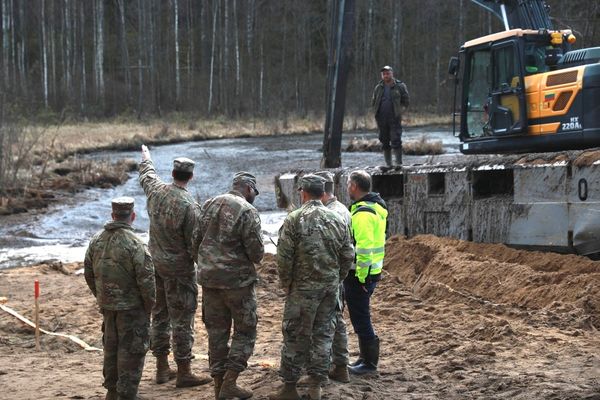
The agency reported that if all goes well, the astronauts could strap in as soon as 2024 for a lap around the moon. By the end of 2025, NASA is aiming to land two people on the lunar surface.
Liftoff is all set for Monday morning from NASA's Kennedy Space Center, however, the six-week test flight is risky and could be cut short if something fails, according to the warning issued by NASA officials.
On Wednesday, NASA Administrator Bill Nelson told The Associated Press, "We are going to test it. Next week, we will do such things that we could never do with a crew on it in order to try to make it as safe as possible."
Meanwhile, the retired founder of George Washington University's space policy institute said that a lot is riding on this trial run, spiraling costs and long gaps between missions will make for a tough comeback if things go in the south direction.
John Logsdon said, "It will be the first step in a sustained program of human exploration of the moon, Mars, and beyond. Will the US have the will to push forward in case of a major malfunction?"
The mission costs more than $4 billion. Add everything up since the program's inception a decade ago until a 2025 lunar landing, and there's even more sticker shock, that is, $93 billion.
Take a look at the rundown of the first flight of the Artemis program, named after Apollo's mythological twin sister,
Rocket Power
This new moon rocket is shorter and slimmer than Saturn V rockets that hurled 24 Apollo astronauts to the moon a half-century ago. It is called the Space Launch System (SLS) rocket, according to Nelson.
Unlike Saturn V, the new rocket also has a pair of strap-on boosters refashioned from NASA's space shuttles. The core stage will keep firing before separating and crashing into the Pacific in pieces. Two hours after liftoff, an upper stage will send the capsule, Orion, racing toward the moon.
Moonship
The new high-tech rocket is named after the constellation. It's roomier than Apollo's capsule at 11 feet tall, seating four astronauts instead of three. A full-size dummy in an orange flight suit will occupy the commander's seat for this test flight.
Two other mannequins made of material simulating human tissue — heads and female torsos, but no limbs — will measure cosmic radiation, one of the biggest risks of spaceflight. One torso is testing a protective vest from Israel.
Unlike the rocket, Orion has launched before, making two laps around Earth in 2014. However, this time, the European Space Agency's service module will be attached for propulsion and solar power via four wings.
Flight Plan
The new Orion's flight will last six weeks from Florida liftoff to the Pacific splashdown, twice as long as astronauts' trips in order to tax the systems. The flight will take nearly a week to reach the moon as it is 386,000 kilometers away.
The capsule will enter a distant orbit with a far point of 61,000 kilometers after whipping closely around the moon. It will then put Orion 450,000 kilometers from Earth, farther than Apollo.
As Orion hits the atmosphere at 40,000 kph on its way to a splashdown in the Pacific, the big test comes to an end here.
Apollo vs Artemis
Over 50 years later, Apollo still stands as NASA's greatest achievement. It took just eight years to go from launching its first astronaut, Alan Shepard and landing on the moon using 1960s technology. In contradiction, Artemis already has dragged on for more than a decade, despite building on the short-lived moon exploration program constellation.
A total of 12 Apollo astronauts walked on the moon from 1969 through 1972. For Artemis, NASA will be drawing from a diverse astronaut pool currently numbering 42 and is extending the time crews will spend on the moon to at least a week.
NASA's Nelson, promises to announce the first Artemis moon crews once Orion is back on Earth.
What's next
A second test flight will send four astronauts around the moon and back, perhaps as early as 2024.
NASA aims to send another four up, with two of them touching down at the lunar south pole, according to AP reports. Orion doesn't come with its own lunar lander as the Apollo spacecraft did, so NASA has hired Elon Musk's SpaceX to provide its Starship spacecraft for the first Artemis moon landing.
Two more private companies are developing moonwalking suits. The Starship would link up with Orion at the moon and take a pair of astronauts to the surface and back to the capsule. So far, Starship has only soared 10 kilometers.
Meanwhile, Elon Musk also wants to launch Starship around Earth on SpaceX's Super Heavy Booster before attempting a moon landing without a crew.
(With AP inputs)







